Built for short-distance heavy coal trains, the 4200s and variations played a key part in the transport of Welsh coal.
Once exploring the working careers of each class, we will then see how each preserved member has spent their lives since the end of British Railways steam.
GWR 4200 Class
Since the turn of the century, the Great Western Railway had been gaining new railways to either operator rolling stock for or acquired them outright. In both cases, the GWR provided the engines which ran the lines.
Many of these lines were in South Wales, which transported coal from the mines to local ports usually. This coal traffic was growing year on year on average, which over time meant the current locomotives hauling these trains needed replacing.
Design and Construction
On most of these lines, engines with a 0-6-2T wheel arrangement dominated hauling the coal trains. This was due to the 0-6-2T layout was suitable for navigating the difficult routes in the harsh South Welsh landscape, which often lead to the tracks having steep gradients and scrap curves.
With heavier trains, a different wheel arrangement would need to be adopted, with Churchward, Chief Mechanical Engineer of the GWR, choosing the 2-8-0T layout. Initially, he had proposed a 2-8-2T, but this was rejected on the grounds it would restrict where the class could run.
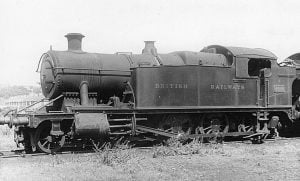
The basis for the new class, which would become the 4200s, was the 28XXs 2-8-0 freight engines (More information on the 28XXs can be found here). The slightly smaller Swindon Standard No.4 boiler was used on the 4200s instead of the 28XXs’ Standard No.1 boiler. A spherical joint was fitted on the coupling rod between the third and trailing coupled wheels which gave the engines more lateral movement for negotiating tight curves.
Like many of his classes, Churchward produced a prototype engine, No.4201, which appeared in 1910. Following successful testing, lasting just over one year, the order for the first batch was placed.
The basic dimensions for the 42XXs as built include: 2-8-0T wheel arrangement (coupled wheels – 4 foot (ft) 7 (in), leading wheels – 3ft 2in), Swindon Standard No.4 boiler pressed at 200 lbf/in2, two outside cylinders (18 1/2 in diameter and 30 in stroke), total weight came in at 82 long tons and tractive effort of 31,450 lbf.
Production Series
- Lot No.142 – 4201 (Dec 1910), one engine
- Lot No.187 – 4202 (Jan 1912) to 4221 (Dec 1912), 21 engines
- Lot No.196 – 4222 (Nov 1913) to 4231 (Nov 1913), 10 engines
- Lot No.200 – 4232 (Aug 1914) to 4241 (Oct 1914), 10 engines
- Lot No.203 – 4242 (Feb 1916) to 4261 (May 1917), 20 engines
- Lot No.213 – 4262 (Sep 1919) to 4285 (Aug 1920), 25 engines
- Lot No.220 – 4286 (Aug 1921) to 5204 (Feb 1923) and 4200 (Feb 1923), 19 engines
Performance in Service
One of the compromises of having the No.4 boiler was smaller water tanks, combined with the class’ relatively high water consumption, lead to frequent water refills. Fortunately, most of the routes the 4200s used had water stops but did restrict them to shorter distance trains. Despite this, the class performed well hauling coal trains, with many exceeding 1000 tons.
Improvements and Modifications
With the introduction of the first batch, starting with 4202 in 1912, a couple of notable changes had been incorporated into the design. Firstly, the top feed was fitted, as this helped the water movement around the boiler, decreasing the chances of corrosion. Secondly, the coal bunker was extended to increase it’s capacity by half a ton, a total of three and a half overall. Seven years later in 1919, the coal bunker was increased in height to add a further half a ton to hold a total of four tons.
5205 and 5275 Class
A change in CME of the GWR came in 1922, with Collett now in charge, he decided to give the 4200s a big update and create the 5205 series. The major change being increasing the cylinder diameter to 19in, pushing tractive effort up to 33,170 lbf. Also, outside steam pipes were fitted.
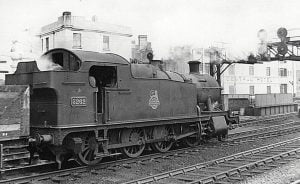
In 1930, the 5275 series was formed. The only differences this batch had over the 5205s was to the running plate around the cylinders, which became raised and curved at the front end. Below shows the Lots for the engines built in the 5205 and 5275 series.
- Lot No.223 – 5205 (Jun 1923) to 5214 (Nov 1923), 10 engines
- Lot No.225 – 5215 to 5244, 30 engines
- Lot No.233 – 5245 to 5274, 30 engines
- Lot No.266 – 5275 to 5294, 20 engines
- Lot No.329 – 5255 to 5264, 10 engines (engines originally carrying these numbers were rebuilt into 7200s)
7200 Class
A big blow for the coal industry came in 1929 with the Financial Crash in America, which affected UK industries. This had a big impact on the 4200s and their variations, with many being stored at Swindon Works due to little coal traffic. The limited coal and water supply onboard the engines was one of the main issues they couldn’t be used on many other duties, so Collett produced plans to enlarge the class. By fitting a trailing truck, to form a 2-8-2T, added an extra two tons of coal and 600 imperial gallons of water. This proved to be a success so many of the 4200, 5205 and 5275 were rebuilt into 7200s.
- Lot No.266 – 5275 to 5294, rebuilt as 7200 to 7219 between Aug and Nov 1934
- Lot No.233 – 5255 to 5274, rebuilt as 7220 to 7239 between Aug 1935 and Feb 1936
- Lot No.318 – 4239, 4220, 4202, 4204, 4216, 4205, 4234, 4244, 4249, 4209, 4219, 4240, 4210 and 4245, rebuilt as 7240 to 7253 between Aug 1937 and Dec 1939
The 7200 class only received one change, which was the amount of coal and water. This was done by fitting a ‘Coal Scuttle’ bunker, which would allow a total of 2,700 imp gallons of water, but only five tons of coal. Although sharing the same route availability of “Red” as the 4200s, the longer wheelbase resulted in the 7200s being barred from a few goods yards.
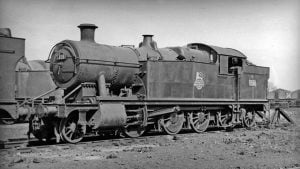
Decline and Withdrawal
As mentioned earlier, the Financial Crash took a big toll on the 4200s, with the 5275 series on average only being service for five years before being rebuilt into a 7200. All bar one locomotive survived into BR ownership, with withdrawals starting in 1959 and 1962 for the 4200s and 7200s respectively. The year 1965 saw the end for both classes, with the last four 7200s being removed from traffic in June and 4268 being withdrawn in August.
Preservation
4200s
Of the 105 4200s built by the GWR, five have been saved from the cutter’s touch.
- 4247 – Operational on the Bodmin and Wenford Railway in BR Unlined Black with Early Crest, owned by the 4247 Preservation Society. The Society rescued 4247 from Barry Scrapyard in 1985, with full restoration into 5205 series design completed in 2001. Since then, 4247 has toured various preserved railways, with its home line being the Bodmin and Wenford Railway. Current boiler ticket expires in 2021.
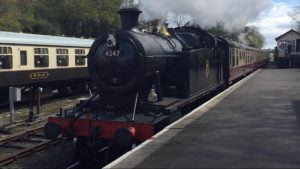
4247 // Credit Cameron White - 4248 – Static Display at STEAM – Museum of the Great Western Railway, in Swindon. Leaving Barry one year later than 4247, the decision was made to only cosmetically restore the boiler, frame and wheels to show how an engine would have looked while undergoing an overhaul at Swindon Works.
- 4253 – Undergoing Restoration at the Kent and East Sussex Railway, owned by the 4253 Locomotive Company Ltd. Departing the famous scrapyard in August 1987, 4253 first home was the Pontypool and Blaenavon Railway. Little to no work was carried out on the tank, until the present owners purchased 4253 in June 2011, where work has started. The tank is in 5275 series design. For more information about 4253 or to support the company, please visit their website here (http://www.4253.co.uk/)
- 4270 – Operational on the Gloucestershire Warwickshire Steam Railway in GWR Unlined Green with “G W R” on tank sides. Also leaving Barry in 1985, restoration wouldn’t start until 2003, where initial work was carried out at the GWSR. The majority of the work was completed away from the line but 4270 returned in 2013, where the following year saw the tank steam for the first time in preservation. Current boiler ticket expires in 2022.
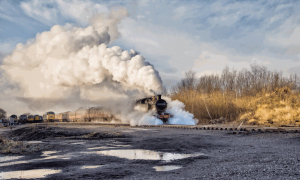
4270 at the East Lancashire Railway // Credit Pat Kilner - 4277 “Hercules” – Awaiting Overhaul, owned by the Dartmouth Steam Railway. Leaving Barry Scrapyard in 1986, the tank was restored. In 2008 4277 changed ownership, and following its first overhaul in preservation, the engine was returned to traffic on its home line of Dartmouth Steam Railway, where 4277 spent most of its second boiler ticket in preservation. During the last six months of running, an agreement between the DSR and Churnet Valley Railway saw the tank head to the Staffordshire line, where it was repainted into BR Unlined Black with Early Crest. Steaming for the last time in Early February 2018, work on 4277 is likely to start when 4555 is completed.
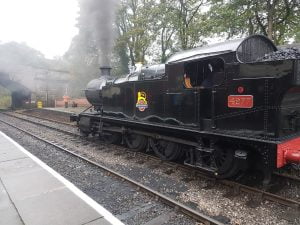
4277 at Froghill Station, CVR // Credit Jamie Duggan
5205 Series
- 5224 – Undergoing overhaul at Peak Rail, owned by The Waterman Railway Heritage Trust. Leaving the famous scrapyard in 1978, 5224 has been restored to 5275 series design and was last operational in 2011. Since then, initial plans were to overhaul the tank at Crewe, before the engine moved to Peak Rail.
- 5227 – Static display in scrap condition, some parts of the locomotive will be used on other projects. As a member of the ‘Barry Ten’, 5227 didn’t leave Barry Island until 2013, when the tank arrived at Didcot Railway Centre. The decision was made to use some parts to help other projects, such as the axleboxes which will be used on the new build GWR 47XX No.4709 under construction.
- 5239 – Undergoing overhaul at the East Somerset Railway, owned by Dartmouth Steam Railway. A new lease of life came for the tank in 1973 when it left the scrapyard and was restored at Newton Abbot and Paignton through the 70s. Since then 5239 named “Goliath” has stayed at its home line and hauled thousands of passengers over the years. Its last boiler ticket expired in 2015, which followed by a couple of years in store, 5239 was sent to the East Somerset Railway for an overhaul. Work has been progressing well, with the tank due to steam again at the end of 2019/early 2020.
7200 Class
- 7200 – Under restoration at Buckinghamshire Railway Centre, owned by The 7200 Trust. Leaving Woodham’s Yard in 1981, The 7200 Trust was formed in the late 90s to start the restoration. Majority of the bottom-end restoration has been completed, along with new water tanks and bunker. In late 2018 the Trust announced the boiler would be restored by Heritage Boiler Steam Services.
- 7202 – Under restoration at Didcot Railway Centre, owned by the Great Western Society. Purchased by the GWS in 1973, initial work was to stop any further decay to the tank, before restoration started. Most of the chassis is complete.
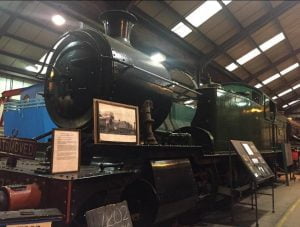
7202 // Credit Cameron White - 7229 – Under Restoration at the East Lancashire Railway. Leaving Barry in 1984, the tank has seen small amounts work. Research into 7229 has found no current or official information on the current condition of the engine, nor if any work has been carried out.
Thank you to Cameron White for the shot of 7202 and 4247 (YouTube Channel here) and to Pat Kilner for allowing us to use the shot of 4270 at Baron Street, ELR (Flickr can be found here).
We hope you have enjoyed this week’s Class Information, stay tuned for next week’s article.
Where Next?
News Homepage
For the Latest Railway News
RailAdvent Online Shop
Framed Prints, DVD’s / Blu-Ray’s and more
LocoStop Community
Come and share your railway pictures


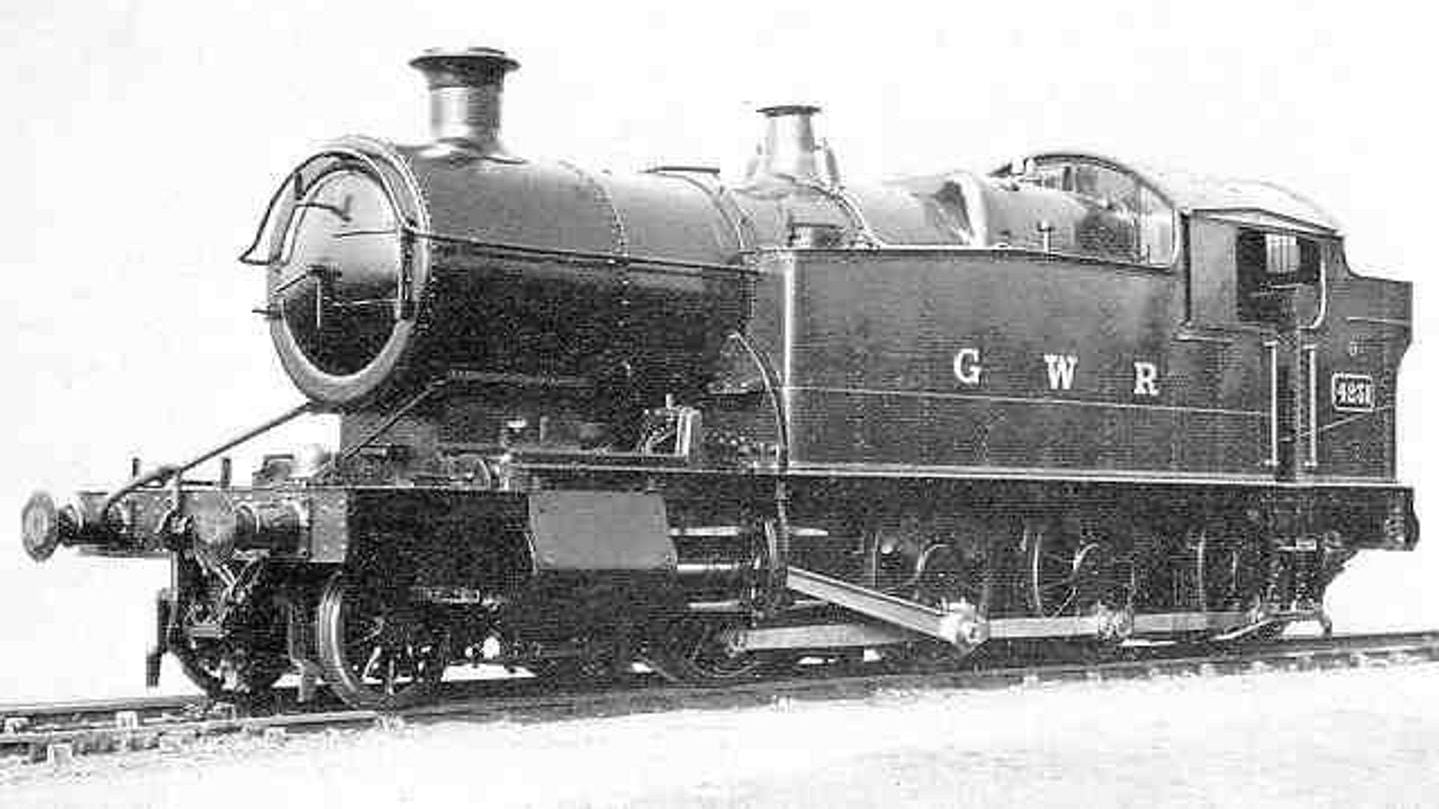



Responses
Great article, well done.
I have a nice shot in black and white of a 72xx entering Westbury back in the late ’50s with a short goods. If you are interested in a copy for your gallery just let me know.
[…] Source: GWR 42XX, 5205, 5275 and 72XX Classes of steam locomotives […]